Utilizing ETags in Oracle Database Tables
-
目次
“Maximize Efficiency and Integrity: Harnessing ETags in Oracle Database Tables”
導入
Utilizing ETags in Oracle Database Tables is a strategy aimed at enhancing the efficiency and performance of web applications by optimizing data retrieval and reducing server load. ETags, or Entity Tags, are part of the HTTP protocol used as a mechanism for web cache validation and conditional requests. In the context of Oracle Database, ETags can be implemented to manage concurrency and maintain the integrity of data. By assigning a unique ETag to each row or record in a database table, applications can quickly determine whether the data has been modified since it was last accessed, thereby deciding whether to fetch the data anew or use the cached version. This approach not only minimizes unnecessary data transfer and processing but also ensures that users interact with the most current data without directly querying the database each time, thus optimizing resource utilization and improving user experience.
Implementing ETags for Optimizing Concurrency Control in Oracle Databases
Utilizing ETags in Oracle Database Tables
In the realm of web development and database management, ensuring data integrity and optimizing concurrency control are paramount. One effective strategy employed to manage these aspects in Oracle databases involves the use of Entity Tags (ETags). ETags, primarily known from their use in HTTP for web cache validation and conditional requests, can also be leveraged within Oracle databases to enhance performance and concurrency control.
ETags are unique identifiers assigned to specific versions of a resource. In the context of Oracle databases, these tags can be utilized to track changes in data at the row level within a table. This mechanism is particularly useful in environments where data consistency and freshness are critical, and where multiple transactions or users might attempt to modify data simultaneously.
The implementation of ETags in Oracle databases begins with the generation of a unique identifier for each row in a table. This identifier, or ETag, is recalculated every time the row is updated. Typically, a hash function can be applied to the row’s data to generate this unique ETag. The choice of hash function depends on the specific requirements for speed and collision resistance.
Once ETags are implemented, they can be used to manage read and write operations more efficiently. When a client fetches a row from the database, the corresponding ETag is also retrieved and can be sent back to the client. If the client later attempts to update that row, it can provide the previously retrieved ETag along with the update request. The database then compares the provided ETag with the current ETag of the row. If the ETags match, it indicates that the row has not been modified since it was last fetched by the client, and the update can proceed. If the ETags do not match, it means the row has been altered by another transaction, and the update should be rejected to prevent overwriting recent changes.
This approach, known as optimistic concurrency control, significantly reduces the likelihood of update conflicts within the database. It allows multiple users or processes to access and modify the database concurrently without requiring locks that can degrade performance. By using ETags, Oracle databases can handle more transactions and maintain higher levels of user interaction and data freshness.
Moreover, the use of ETags extends beyond just handling concurrency issues. It also enhances the overall security and integrity of the database. By ensuring that updates are not applied to stale data, ETags help maintain the accuracy and reliability of the database contents. This is particularly important in applications where data integrity is crucial, such as in financial or medical records systems.
In conclusion, the integration of ETags into Oracle database tables offers a robust method for optimizing concurrency control while maintaining data integrity. By uniquely identifying each version of a row’s data, ETags prevent conflicting updates and ensure that only the most recent and valid data modifications are committed. This not only improves the performance of the database by reducing the need for extensive locking mechanisms but also enhances the security and reliability of the data stored within. As databases continue to grow in size and complexity, employing strategies such as ETags will be crucial in managing the increasing demands on data management systems effectively.
Strategies for Efficient Cache Management Using ETags in Oracle Database Tables

Utilizing ETags in Oracle Database Tables
In the realm of web development and database management, efficiency and speed are paramount. One of the lesser-known but highly effective strategies for enhancing the performance of web applications interfacing with Oracle databases involves the use of Entity Tags (ETags). ETags, primarily used in HTTP for web cache validation, can be ingeniously applied to manage cache more efficiently when working with Oracle Database tables.
ETags are a mechanism that web servers and browsers use to determine whether the content present in the browser’s cache matches the content on the server. This is crucial for optimizing server load and reducing unnecessary data transfer. When applied to Oracle databases, ETags can serve a similar purpose by ensuring that the data served to an application is the most current version, especially in environments where data changes frequently.
The implementation of ETags in Oracle Database tables begins with the generation of a unique identifier for each row of a table. This identifier, or ETag, is a hash or a checksum of the row’s contents. Whenever a row is updated, its ETag must also be recalculated. This approach ensures that each version of a row’s data can be uniquely identified by its ETag, enabling precise tracking of changes.
To integrate ETags into an Oracle Database environment, developers can add an ETag column to relevant tables. This column will store the hash values representing the state of each row. When an application queries the database, it can include the ETag values of its cached data. The database can then compare these provided ETag values with the current ETag values stored in the table. If the values match, the database knows that the cached data is up-to-date and can skip retransmitting the data, thus saving bandwidth and reducing load times.
Moreover, the use of ETags facilitates a more granular level of cache control. Instead of relying on timestamps, which can sometimes lead to unnecessary data transfers due to slight discrepancies in time settings between servers, ETags provide a method based strictly on the content itself. This method is particularly useful in distributed systems where data consistency and freshness are critical, and where even minor delays in data updates can lead to significant issues.
However, the implementation of ETags also introduces some challenges. The primary concern is the overhead of maintaining and calculating ETags. Each update to a row requires a new ETag to be generated. This process can add computational and temporal overhead, especially with large volumes of data or high-frequency updates. Therefore, it is essential to evaluate whether the benefits of using ETags outweigh the costs in your specific context.
Additionally, developers must ensure that the method used for generating ETags is sufficiently robust to avoid collisions, where different data states might produce the same ETag. Using strong hashing algorithms can mitigate this risk, although it may increase computational overhead.
In conclusion, while ETags are traditionally associated with web caching, their application in Oracle Database tables offers a promising strategy for efficient cache management. By enabling precise control over data freshness and reducing unnecessary data transfers, ETags can significantly enhance the performance of database-driven applications. However, careful consideration and planning are required to implement ETags effectively, balancing the benefits of faster data access against the costs of additional processing and maintenance.
Best Practices for ETag Integration in Oracle Database Environments for Improved Data Integrity
Utilizing ETags in Oracle Database Tables
In the realm of web development and database management, ensuring data integrity and optimizing performance are paramount. One effective strategy employed to achieve these objectives is the integration of Entity Tags (ETags) within Oracle Database environments. ETags, primarily known from their use in HTTP for web cache validation and conditional requests, can also play a crucial role in managing data concurrency in database applications.
ETags are unique identifiers assigned to specific versions of a resource. In the context of Oracle databases, these tags can be used to track changes in data at the row level. This mechanism is particularly useful in scenarios where multiple users or processes might attempt to update the same data concurrently. By implementing ETags, developers can prevent the common problem of lost updates, thereby enhancing data integrity and consistency.
The process of integrating ETags in Oracle Database tables begins with the generation of a unique identifier for each row. This identifier can be a hash or a checksum of the row’s contents, which changes whenever any column in the row is modified. Typically, a column specifically for storing this ETag is added to the relevant tables. Whenever an application fetches a row for editing, it also retrieves the ETag. Subsequent update operations can then include a check to ensure that the ETag stored in the database matches the ETag retrieved with the row. If the tags do not match, it indicates that the row has been altered since it was last fetched, and the update can be aborted or handled according to specific business logic.
Moreover, the use of ETags extends beyond just managing concurrency. It also enhances application performance by reducing the need for locking rows for updates. Since ETags allow for stateless conflict detection, databases can handle more concurrent operations without significant performance degradation. This is particularly beneficial in high-traffic environments where locking mechanisms might lead to bottlenecks.
However, the implementation of ETags in Oracle databases must be approached with careful consideration of the overhead involved. The generation and comparison of ETags require additional processing and storage resources. As such, it is crucial to evaluate the trade-offs between the increased resource utilization and the benefits of using ETags. In many cases, the advantages of improved data integrity and system responsiveness justify the extra resource expenditure.
Furthermore, maintaining the accuracy and efficiency of ETag generation algorithms is essential. The chosen method must ensure that ETags are generated in a way that accurately reflects changes in the data. Any failure in the ETag mechanism might lead to undetected conflicts or unnecessary rejections of updates, undermining the reliability of the database system.
In conclusion, the integration of ETags in Oracle Database tables offers a robust solution for managing data concurrency and integrity. By providing a mechanism for conditional updates based on the state of the data at the time of access, ETags help prevent update conflicts and enhance overall system performance. However, successful implementation requires careful planning and consideration of the system’s specific needs and constraints. With the right approach, ETags can significantly contribute to the efficiency and reliability of Oracle Database environments, ensuring that data remains consistent and accurate across various user interactions and system processes.
結論
Utilizing ETags in Oracle Database Tables can significantly enhance the efficiency and performance of web applications by reducing server load and bandwidth usage. ETags, or entity tags, serve as a mechanism for web cache validation, allowing servers to quickly determine if the content has changed since the last request. By implementing ETags in Oracle Database Tables, developers can ensure that data served to clients is up-to-date without requiring a complete data transfer for each request. This approach not only speeds up user interactions but also optimizes data synchronization processes, making it a valuable strategy for improving web application responsiveness and scalability.
